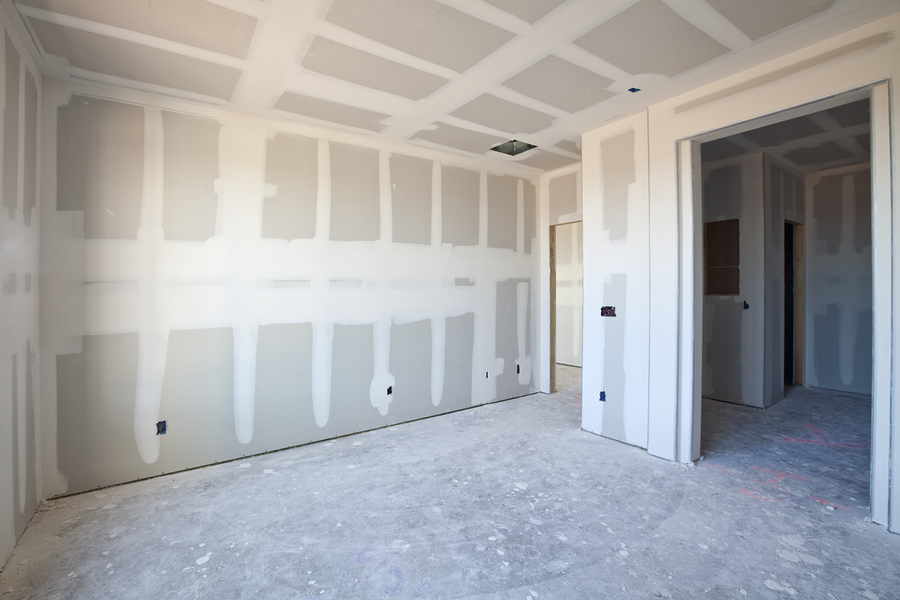

Instead of applying plaster on walls, you can directly add plasterboards. Plasterboard is an alternative to plaster walls. It can often create uneven texture on the repaired areas due to the difference between components of joint compound and plaster. Plaster walls belong to the list of surface joint compounds that can be used on.īut one of the challenging things when it comes to applying joint compound on plaster walls is to match the joint compound with the texture of plaster walls. Joint compound is one of the strongest drywall muds available in the market and they are very effective on many different kinds of surface. When it comes to repairing holes and cracks on plaster walls, joint compound is highly suggested by experts because of its adhesive quality. Plaster walls sometimes need repair work done on them. So, I was only suggesting it as a possible solution for a similar fellow in a similar situation.Let’s see if joint compound can be used on different types of plaster surface. Bear in mind I had to mix it up as well and lay it on, but I ended up with the bottom layer going off with a few high ridges on it which then completely messed up the top layer as I applied itīut, like the OP, I had a tatty wall to do in a bedroom which had numerous different surfaces - bare concrete, paint, old plaster, etc., and after giving it two coats of PVA and allowing them both to dry, I applied a single thin coat of plaster and it went on like a dream.

I did - once - try doing the 2-coat thing myself.

I did only suggest this to the OP as a DIY-type way of doing it, and I'm not at all trying to say it's a better way - it clearly isn't. You are absolutely right on a number of counts! Yes, I do have to work hard as hell to get a good finish, and I practically drown the surface in water during the process (I use a hand sprayer.) You can, of course, ignore all that if you wish. Sod doing two coats - this was pure invention just so's pros could show-off it has no benefit in reality - it's a mere ego trip for plasterers.*Īpplying a single 2mm skim onto a dry-PVA'd wall is a dream. Apply your skim in - gasp - one thin (2mm-ish) coat. Right, the next hint is a cardinal sin - but if you answered the two questions above like I would, then proceed as follows. Use a good, known brand of PVA, and don't use waterproof type. The very top surface of the PVA re-activates slightly, and the skim bonds beautifully. When you let it dry, it becomes a superb surface to skim on to.

Ok, I know it's meant to be tacky, but if you get it even slightly wrong, you'll be very unhappy. If you try to skim over still-wet PVA, then you'll find out why it's not a good idea (troweling on oil comes to mind). Ok, here's the easy bit - let it dry fully. The second coat can be pretty much neat, or thinned very slightly if it makes it easier to apply. Ok, are you a DIYer? Do you just want to be able to carry out the odd bit of skimming for yourself, or do you want to learn to do it like a pro? If the answers are 'yes', and 'odd bit', then read on.Īpply the PVA as described above - the first coat slightly thinned (read the instructions), and when fully dry, apply the second. I'm sure the Thistle Bondit mentioned above is great stuff, but you should get away with PVA if you want to go that way. Followed off with a good wash down using sugar soap. On really bad walls (I think 60's-70's paste must be particularly yucky stuff), I've had to spray a little water on to the walls, allow it to soak into the paste, and then scrape them down using a squeegee. I have found that any traces of old wall paper paste can be an absolute swine as it re-activates when anything water-based is applied to it - emulsion, PVA, etc - and it expands and can make your job a mess.Ĭertainly before painting, you'll have to thoroughly remove all traces - you might get away with it if PVA-ing instead, but it's a risk. I guess you've done the job now? If so, what did you do,and how did it go?


 0 kommentar(er)
0 kommentar(er)
